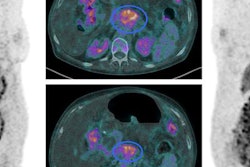Dear Molecular Imaging Insider,
Hybrid imaging has been part of radiology's regimen for the past two decades, and now has become a critical tool for diagnosing various diseases and abnormalities, as well as monitoring patients' conditions. However, after all this time, many radiologists and nuclear medicine specialists think training in this field has not kept pace with the demand.
Those concerns are expressed in a largely European survey in which approximately two-thirds of respondents believed there were too few hybrid imaging experts in their country. One way to solve that deficiency, they recommended, is better coordination between the radiology associations across borders to support hybrid imaging education.
Read more about the challenges and potential solutions by clicking here.
Combining fluciclovine-PET and multiparametric MRI potentially can better detect and classify high-risk prostate cancer than the two modalities alone, according to a Norwegian study. The key to the hybrid modality's efficacy also involves incorporating T2-weighted MRI and diffusion-weighted MR imaging to advance the ability to distinguish between malignant and benign tissue and high-grade tumors from other tissue.
In fact, PET scans should be a normal part of the imaging professional's repertoire, according to Dr. Henryk Barthel, professor of the nuclear medicine clinic at Leipzig University Hospital. He told delegates at last week's German Radiology Congress (Deutscher Röntgenkongress, RöKo 2018) that his affinity for PET comes from the modality's ability to offer precise molecular information about the nature and extent of a disease at early stages, making it quite valuable both in clinical research and patient care.
Another German group is offering positive results with a novel diagnostic and therapeutic (theranostic) approach for ductal pancreatic adenocarcinoma used with SPECT/CT, scintigraphy, and PET/CT. Its study provides the first clinical evidence of the feasibility of treating ductal pancreatic adenocarcinoma with a DOTA-conjugated neurotensin receptor 1 antagonist, 3BP-227, labeled with the radioisotope lutetium-177.
And lastly, Swiss and German researchers have obtained promising results with a novel PET imaging agent that could help guide and assess treatment for people with various neurological diseases. In a preclinical study, the agent targets receptors in nerve cells in the brain that are involved in learning and memory, and it could be useful for studying conditions such as Alzheimer's and Parkinson's diseases, as well as multiple sclerosis.
Make the Molecular Imaging Community part of your daily routine to see the latest news and novel research from Europe and around the world.




















